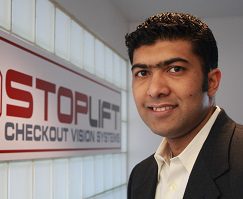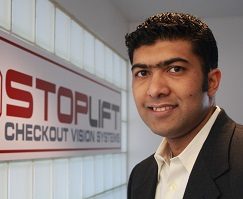 Self-checkout is a marvel of technology that customers seem to love or hate. Love, because it saves them time. Hate, because it sometimes wastes their time because it “beeps” and no one is around to help them finish checking out.
Self-checkout is a marvel of technology that customers seem to love or hate. Love, because it saves them time. Hate, because it sometimes wastes their time because it “beeps” and no one is around to help them finish checking out.
For the retailer or supermarket, self-checkout arouses a different sort of love-hate relationship. Love, because it cuts labor costs and saves customers time. Hate, because it sometimes “beeps” at the customer, thereby requiring more attendant hours resulting in less labor savings.
There is yet another reason the retailer and supermarket are taking a closer look at self-checkout: theft.
Advertisement
Customers have figured out that it is easy to steal in self-checkout. If an attendant catches them with unscanned items, they can always plead ignorance about how to use the system properly. Some popular ploys are:
- Leaving expensive items in the shopping cart, or in the reusable bag on the floor, while scanning cheaper ones;
- Scanning items with the bar code facing up, or covered by your hand;
- The banana trick – putting a $10 a pound package of steak or coffee on the scale, while looking up and entering bananas at 69 cents a pound;
- Scanning an item with one hand while dropping another item into a reusable bag on the floor; and
- Leaving a case of water on the bottom of the shopping cart.
When retailers and supermarkets see the theft and fraud detected on videos, they train the attendants on what kind of customer behavior to watch for. But an attendant might be responsible for four self-checkouts and be busy with one customer, while another customer is stealing.
Nevertheless, self-checkouts have grown throughout the retail and grocery industries with an accompanying demand for video analytics. Self-checkouts have long had one sense — the sense of “touch”. By using weight sensors, they weigh the item placed in the bagging area to see if it matches the expected weight of whatever was just scanned. Unfortunately, legitimate purchases do not always match their expected weight in the database. As a result, weight sensors often produce mistaken alerts which frustrate customers by “beeping” at them and preventing them from completing a transaction.
But recently, self-checkouts have developed a second sense — the sense of “sight”. As with their older cousins, the manned checkouts, the initial driver for video analytics at self-checkouts has been to detect theft. Video analytics, for example, is uniquely capable of detecting a new class of rampant scan-avoidance-based self-checkout theft called “weightless theft”. Weightless theft involves the customer avoiding ever placing an item in the bagging area or on the weight scale — leaving it in the cart or bagging it onto the floor instead — thereby avoiding the need to ever scan/pay for it at all. This is unnoticeable by the weight sensor and detectable only by video analytics.
Our latest technology, used with these smarter self-checkouts, will give chains real-time reporting on self-checkout theft — before the customer leaves the store — while preventing false alerts and improving customer service at the self-checkout. For example, if you place your handbag on the conveyor belt, there will be no beeping, because it knows this is a non-merchandise item, not an item being stolen. The technology can now immediately “double check” against video to determine that the handbag is actually a non-merchandise item not worthy of an alert to the attendant.
Likewise, the barcoded cantaloupe that doesn’t weigh quite the same as every other cantaloupe might still be recognized as a cantaloupe through video, thereby foregoing a false alert. This allows the customer an uninterrupted and more enjoyable experience, gives everyone else a faster moving line, and gives the self-checkout attendant more time to provide true customer service.
By combining intelligent video with the weight sensor, the self-checkout now has the multisensory advantage of having both “touch” and “sight”. While retailers are still beginning to incorporate video analytics into their self-checkout security strategy, the frontier will extend from better theft detection to better customer service. The same video analytics that wow us with detecting fraudulent behavior are in fact equally good at confirming honest behavior. We can now deliver to self-checkouts both better security AND a better customer experience.
Malay Kundu is Founder and CEO of StopLift Checkout Vision Systems, Cambridge, MA, www.StopLift.com, mkundu@StopLift.com.






